AMD's A10-5750M Review, Part 2: The MSI GX60 Gaming Notebook
by Dustin Sklavos on June 29, 2013 12:00 PM ESTGaming Performance
Given that the AMD Radeon HD 7970M is the fastest mobile GPU that AMD offers, I'd ordinarily eschew including our "Value" benchmark results for the MSI GX60. Under the circumstances, though, those numbers might be enlightening. When a system is heavily CPU-limited, gaming benchmark results will often be flat or show very little performance loss as you move up in resolution and settings. It's reasonable to assume we'll see that kind of phenomenon here.


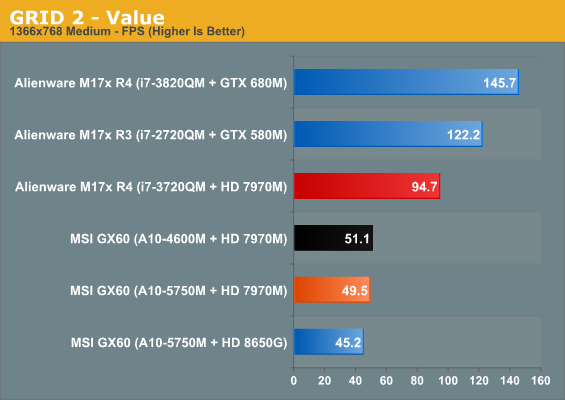
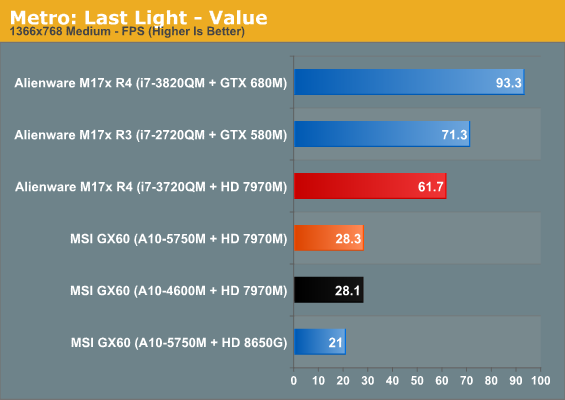
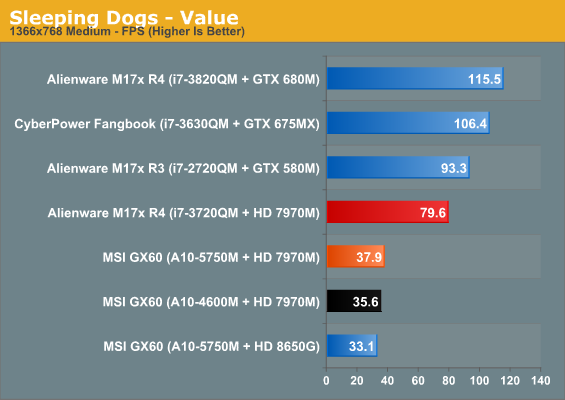
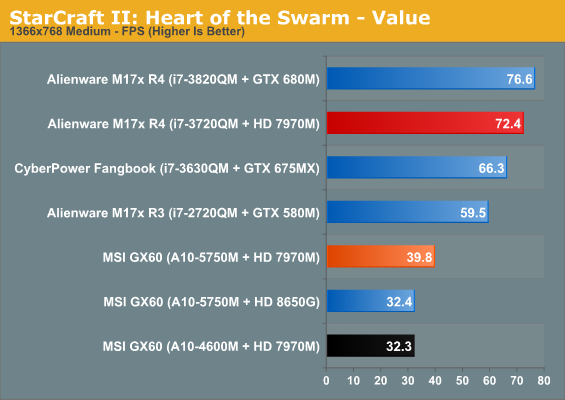
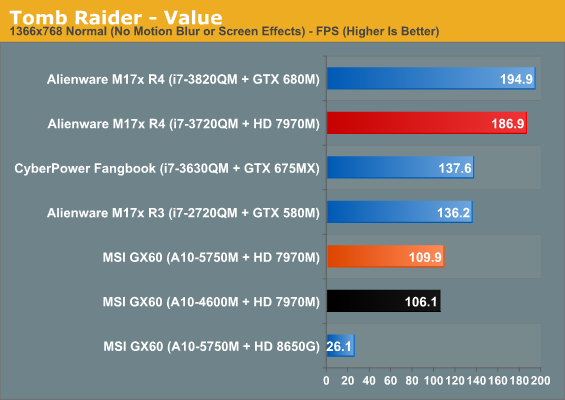
At our "Value" settings, it's clear Richland is giving the 7970M at least a little more performance headroom, but the gulf is massive compared to the way Ivy lets it stretch its legs. Metro: Last Light seems to be a bit of a bizarre outlier, though. Metro 2033 used to hammer the GPU almost exclusively, but times seem to have changed with the new release.
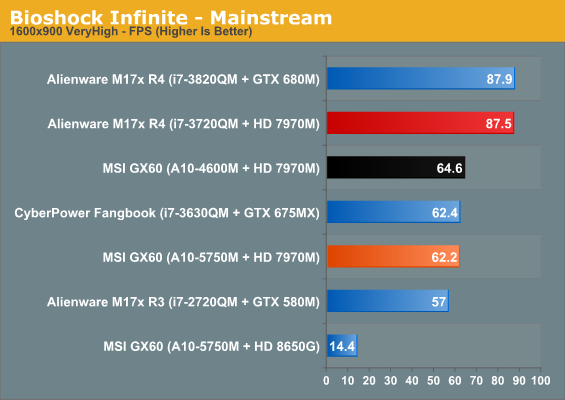
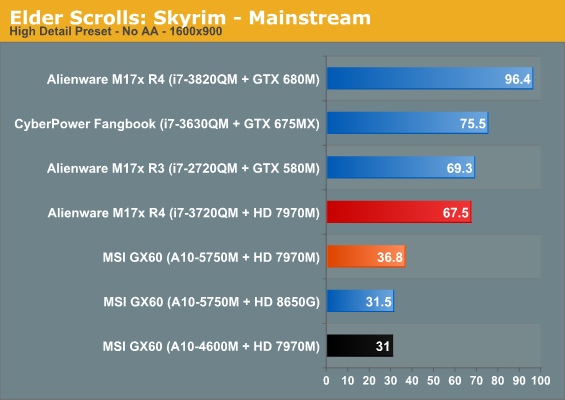
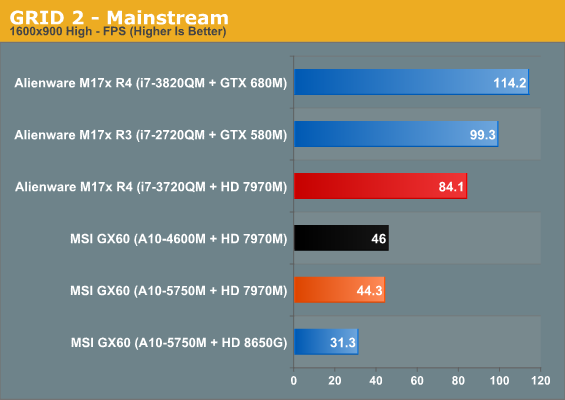
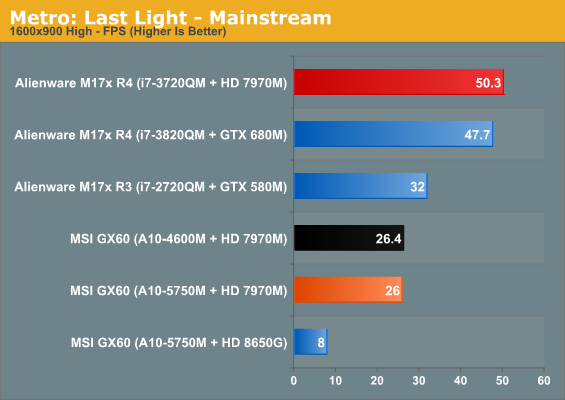
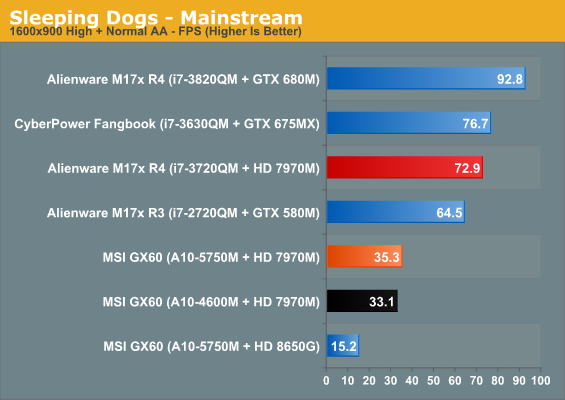

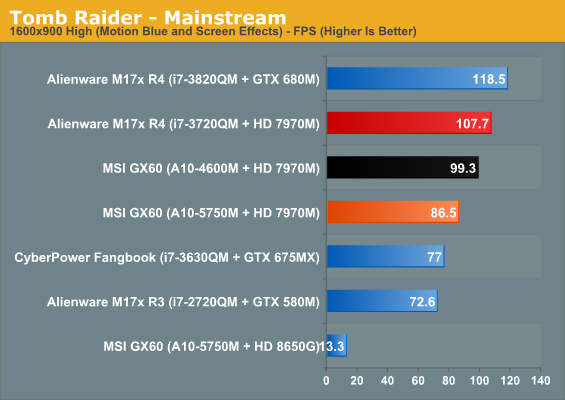
Mainstream performance actually demonstrates the same kind of weird wash between Trinity and Richland that I experienced testing using the IGP. It's only Tomb Raider that takes a bath with Richland, though, and even then it's still very playable. While our settings here help close the gap between the Alienware M17x R4's 7970M and the MSI GX60's, we're still obviously leaving a lot of performance on the table. Metro: Last Light in particular continues to be unplayable.
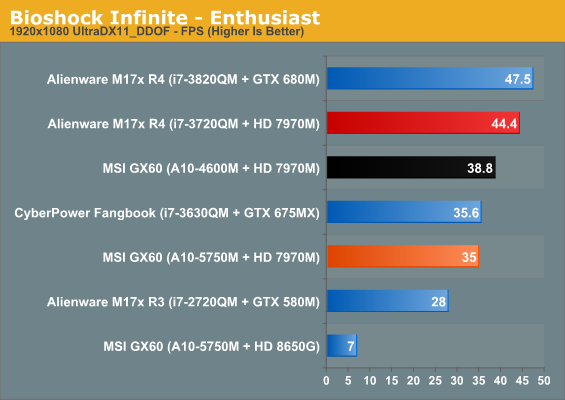
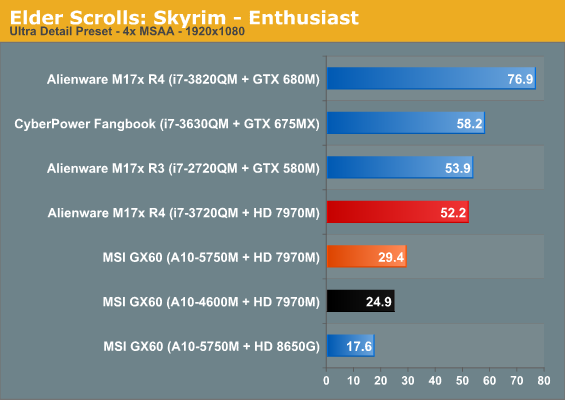
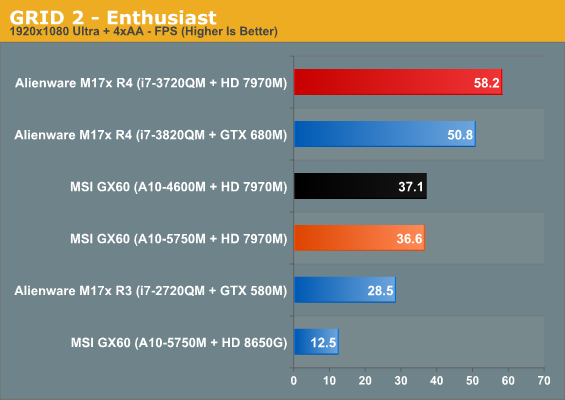
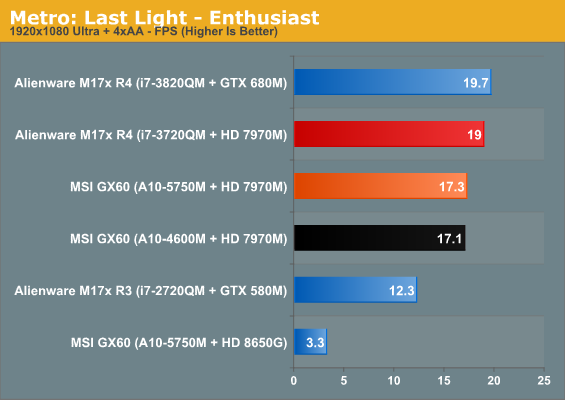
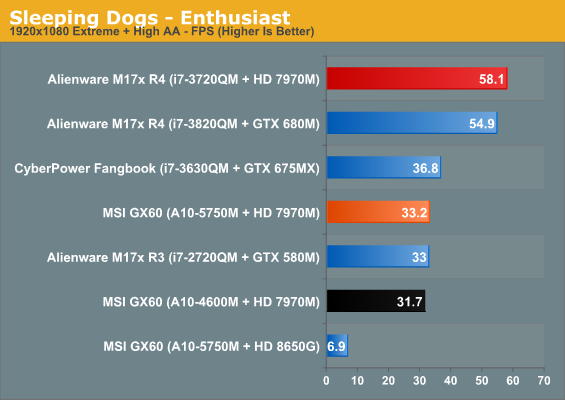

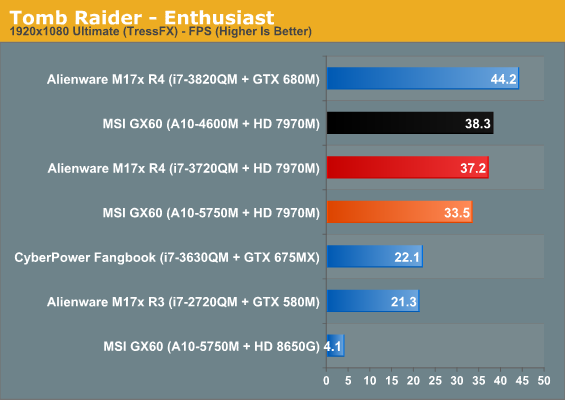
In some cases, enthusiast settings allow the GX60's 7970M to come within striking distance of the M17x R4's. Generally speaking, though, we still have a lot of performance left on the table, and it's sometimes even the difference between a game being playable and not. In situations where we're severely GPU limited (Tomb Raider with TressFX, for example), the GX60 makes a very strong case for itself. The problem is that in other situations, the GTX 675MX (and by extrapolation, the slightly slower GTX 765M) winds up producing a better experience because the CPU isn't bogging it down.










69 Comments
View All Comments
TheinsanegamerN - Saturday, June 29, 2013 - link
2 minutes? pretty good for that generationcoolhardware - Saturday, June 29, 2013 - link
Thank you for including SC2 gaming benchmarks! As I am trying to decide on an ideal system for SC2 (without being overkill), your results are very helpful to me in determining how important CPU performance is versus GPU performance. Thanks again :-)sheh - Saturday, June 29, 2013 - link
When will i5-4xxxM start coming the market?The Intel Haswell announcement at the beginning month had me thinking it's out any day, but so far there are only i7s and U series CPUs, and no real info anywhere on the i5 Ms.
JarredWalton - Saturday, June 29, 2013 - link
I expect we won't see the dual-core standard voltage Haswell chips for at least another month or two -- same thing happened with Ivy Bridge and Sandy Bridge, except we got SV before we got ULV. Now Intel is pushing ULV hard, so they launched those chips at the same time as the QC SV and desktop QC parts.sheh - Saturday, June 29, 2013 - link
Thanks. Well, that's a crying shame. Looks I'll have to settle for an Ivy Bridge.Dustin Sklavos - Sunday, June 30, 2013 - link
No shame in that, Ivy is still a damn fine chip. Haswell is incremental.FwFred - Sunday, June 30, 2013 - link
Incremental for laptops? Do you carry your power cord everywhere?silverblue - Sunday, June 30, 2013 - link
I'd argue that Haswell is far more important in the mobile arena than it ever would be on the desktop. Still, is the difference actually that dramatic?JarredWalton - Sunday, June 30, 2013 - link
It's a big difference if you need, say, 8-10 hours of battery life instead of 6-8. Otherwise, it's not that big of a deal. I rarely go unplugged for more than a few hours, so I can easily live with the lower battery life of IVB.sheh - Sunday, June 30, 2013 - link
HD 4600 is no 5xxx, but still a noticeable update from 4000. And battery time does matter to me. I suppose it'll also go easier on the battery recharge cycles.